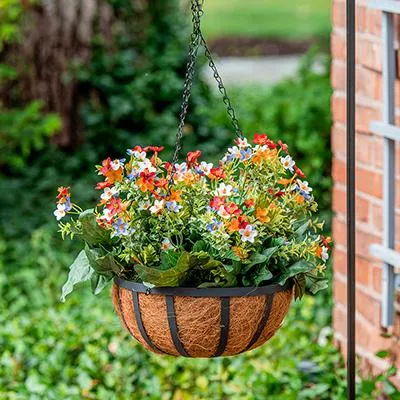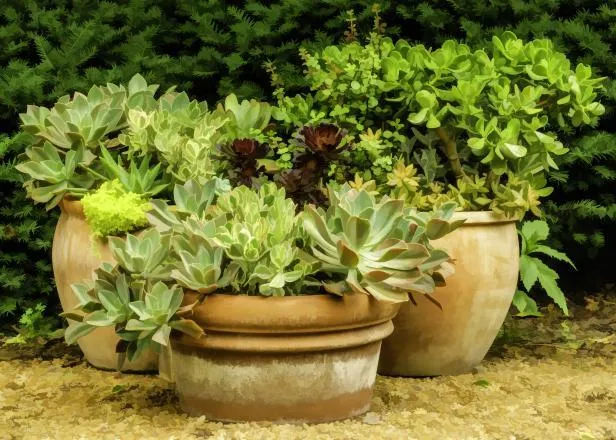Everything You Need to Know About Cascading Plants for Container Gardens
If you’re looking to add some visual interest and flow to your container garden, cascading plants are a great option to consider. Their ability to spill gracefully over the edges of planters and hanging baskets makes them a popular choice. However, with so many varieties to choose from, it can be tough to know which ones are best suited to your needs. In this article, I’ll address some of the key questions a gardener may have about using cascading plants and provide recommendations to help you select the perfect trailing beauties for your space.
What are cascading plants?
Cascading plants, also called trailing or spilling plants, are types of foliage, flowers, or vines that tend to grow outward or downward. Their flexible stems and branches allow them to drape attractively over the sides of containers. Some cascading plants have a natural inclination to cascade, while others may need guidance like plant ties or stakes to encourage their trailing form. Their flowing habit makes them ideal for hanging baskets, window boxes, and tall planters where their foliage or blooms can spill over the edges in a gorgeous waterfall effect.
Popular cascading plant varieties
Here are some top cascading plant options to consider:
- Petunias – With their abundance of colorful blooms from spring through fall, petunias are a beloved cascading annual. Varieties like ‘Supertunia Vista Bubblegum’ produce nonstop bubbles of soft pink flowers.
- Bidens – Also called bidet or beach aster, bidens provide cascades of yellow, orange, or white blooms over long periods. Try ‘Golden Fleece’ bidens for sunny spots.
- Bacopa – This heat-loving vine trails beautifully with small white flowers nearly year-round in many climates. ‘Snowtopia’ bacopa is very frost tolerant.
- Ivy geranium – With lush green or variegated foliage and clusters of blooms in shades of pink, red, white, and purple, ivy geranium is low maintenance.
- Million bells – Calibrachoa, AKA million bells, offer mounds of miniature flower blooms in a rainbow of hues. ‘Tinkerbell Blue’ is a popular variety.
Tips for using cascading plants effectively
To get the most out of your cascading beauties, keep these tips in mind:

- Select a cascading plant that matches your container size and location. Smaller plants work well for hanging baskets while larger vines suit tall planters.
- Consider a mix of textures, colors, and flowering times for visual interest throughout the seasons. A combo of cascading annuals and perennials ensures non-stop color.
- Experiment with trailing plants in different spots like gardening on decks, railings, or staircases where their aesthetic appeal really shines.
- Train vines artfully with plant ties attached to the container lip or interior supports so they grow where you want with proper airflow.
- Deadhead faded blooms regularly to encourage reblooming. Prune older stems as needed to maintain the plant’s shape and prevent legginess.
Common cascading plant care questions
Here are some answers to common cascading plant care concerns:
How often do I need to water?
Water requirements depend on plant type and conditions. In general, check soil moisture daily and water thoroughly whenever the top 1-2 inches dry out, allowing the soil to partially dry between waterings. Water more in heat waves.
Do they need fertilizer?
Most cascading annuals like petunias and bidens appreciate a monthly liquid fertilizer feeding to boost their growth and blooming. Perennial vines do fine with a slow-release granular plant food in spring.
How can I prevent pests?
Be on the lookout for aphids, spider mites, and powdery mildew which sometimes plague cascading plants. Scouting regularly and removing any diseased foliage helps. Biological controls or neem oil work well for mild issues.

Will they survive our winters?
Most cascading annuals are frost tender and will die at the first frost. Protect perennial vines or move containers to a sheltered spot for winter. Pay attention to hardiness zone ratings when choosing vines to overwinter outdoors.
What’s the best way to plant them in my container?
Use a soil-based potting mix for containers and space plants 12-18 inches apart depending on size. Firm soil gently and water thoroughly after planting. Place in partial shade for a few days as they establish before moving to their spot.
Final thoughts on cascading container gardening
With beautiful vines spilling colorfully over the sides, containers decorated with cascading plants are sure to attract attention wherever they’re displayed. The great thing about using trailing species is they bring visual interest in multiple directions – waves of blooms and greenery draw the eye upwards and outwards from their pots. With proper care, cascading plants make container gardening irresistibly cheerful and scenic. Give them a try this season to uplift your outdoor space!
Best Cascading Plants for Containers
| Plant | Water Needs | Sunlight | Height | Color |
|---|---|---|---|---|
| English Ivy | Moderate | Partial Shade | Trails up to 10 feet | Dark Green |
| Pothos | Low | Low Light | Trails up to 10 feet | Green/Variegated |
| Spider Plant | Moderate | Partial Sun | Up to 2 feet | Green |
| Wandering Jew | Moderate | Partial Shade | Trails up to 3 feet | Green/Variegated |
| Sweet Potato Vine | Moderate | Partial Shade | Trails up to 10 feet | Variegated Green/White |
FAQ
-
What types of plants can be used for cascading containers?
There are countless different plants which kind of work well for hanging baskets and tall planters. Some popular choices are ivy, trailing petunias, dangling lipstick vines, and hanging strings of flowers like lobelia. As long as the plant grows downward and doesn’t mind its roots getting a little crowded, it may be suitable for a cascading setup.

-
How do I plant a cascading container?
To start, put some potting soil or garden dirt in the bottom of the planter. Then arrange your first plants around the edges so their roots are buried and leaves are hanging over. Next, place more plants inward and continue layering them snugly together moving toward the center. You want everything to mesh into one big mass of greenery spilling out. Water well to settle them in.
-
Do cascading plants need special care?
Mostly no – they basically need the same routine as other potted plants. You should water when the soil becomes dry, fertilize monthly in spring and summer, and trim off any dead or diseased growth. However, cascading setups might need a little more H2O since the soil could dry faster hanging up there, exposed to sun and breeze. On the other hand, the dangling position means excess water has an easy out the bottom.
-
How long do cascading containers last?
If cared for properly, a cute cascading planter can truly wow people for quite some time – maybe even a whole season or longer. That said, things like extreme weather, pests or disease might cut things short. But with a bit of luck and TLC, your masterpiece could stay looking great for months. Just don’t get too attached – nature has a funny way of messing with our garden plans sometimes.
-
What types of containers work best?
Any tall pot, basket or hanging planter can potentially suit cascading plants. Still, some options may function better than others. Wire or plastic hanging baskets allow for good drainage. Terra cotta or glazed pots provide an aesthetically-pleasing structure but can dry soil faster. And rustic wooden troughs basically look amazing overflowing with greenery. As long as it has holes for moisture to escape, an open-top design could prove totally awesome.

-
Is a cascading setup difficult to maintain?
Perhaps not as challenging as it may seem. Sure, having to water and care for plants dangling up high takes maybe a touch more effort than your average backyard bed. Nevertheless, a little climbing or use of a small ladder makes tending to pots welcomingly simple. As long as you don’t forget to check them regularly, cascading planters can actually stay fairly low-fuss all summer long.
-
Any tips for achieving the “perfect cascade”?
Plant density plays a key role in getting that full, flowing look. Laying greens closely together results in leaves spilling beautifully over edges as they grow. You might also squeeze flowering plants into gaps for added pop. Speaking of flowers, choosing a mix of varieties blooming at varying times basically ensures constant color. Finally, location matters – hanging your masterpiece somewhere with decent height really lets its lushness shine down below.
